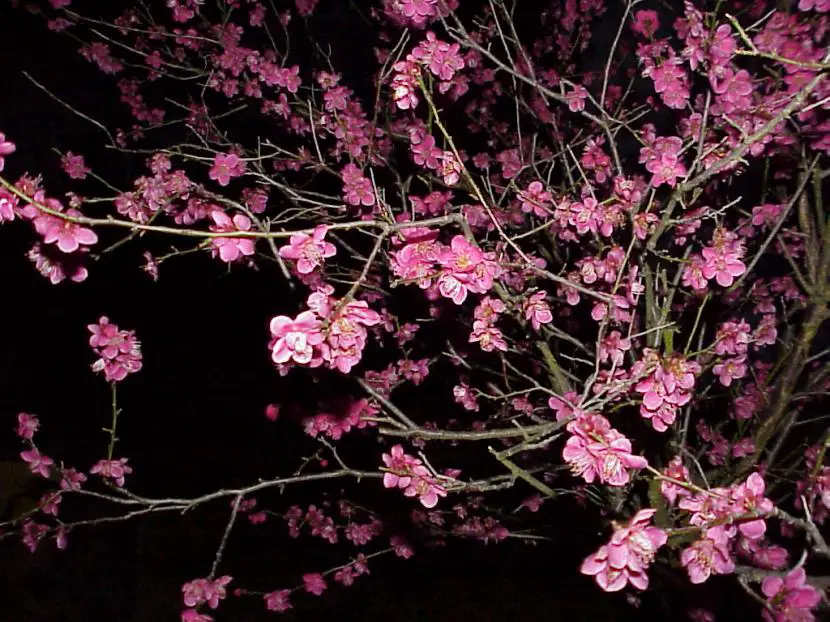
One of the most beautiful trees that comes from the Asian continent is undoubtedly the japanese apricot tree. Its flowers, which can be pink or white depending on the variety, make this plant a very attractive option to have in our oriental style garden. In addition, it is resistant to cold and pruning, with which we can let it grow freely or control its growth, in a wide variety of climates!
Do you want to meet this beautiful tree?

The Japanese apricot tree, whose scientific name is prunus husbandIt is originally from China, from where it was introduced in Japan and Vietnam. It is a deciduous tree (loses its leaf in winter) mid-rise that does not exceed seven meters. It is highly valued in the bonsai technique, where we can get specimens with great ornamental value.
It grows in slightly acidic, fertile soils. In clay or calcareous soils it is recommended to improve the soil with organic fertilizers such as worm humus or horse manure, regularly adding iron chelates in order to avoid the appearance of chlorosis. Also it can be had without problems in a pot with specific substrate for acidophilic plants -with a pH between 4 and 6- controlling their growth (and roots) by pruning.

The Japanese apricot tree will grow wonderfully in full sun exposures, in climates with a cool winter, with temperatures below zero degrees. This is a species that appreciates feeling the passing of the seasons, especially from summer to winter, for be able to flourish abundantly over the next year
It is resistant to pests and diseasesbut it can be attacked by cochineal and fungi if there is excess moisture in the substrate. Snails are also frequent during the rainy season that will not hesitate to eat the most tender leaves.
Otherwise, we can enjoy it a lot without having to worry.

